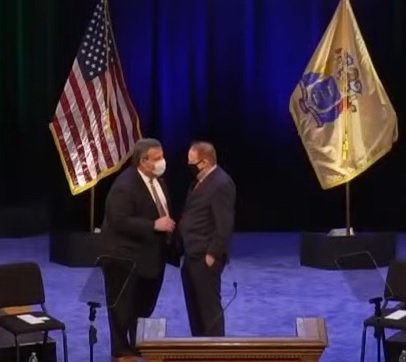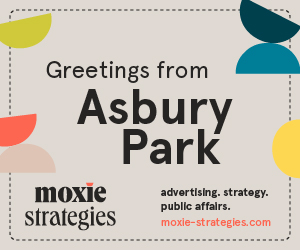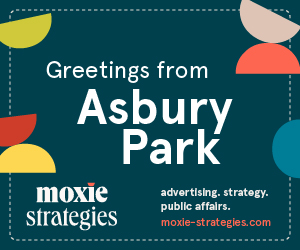Can Fusion Politics Work in New Jersey?

In both political parties, New Jersey and nationally, alienation of the power have – nots is a growing trend. Much of the intra-party intellectual ferment in each party is focused on how to, at best, grant a share of power and participation to the alienated, and, at least, persuade them not to leave the party.
In the Democratic Party, the alienated have-nots are the anti-machine reformers and far leftward progressives. Regarding the GOP, the disaffected are the non Trumpist and anti-Trumpist Republicans. I have come to describe these individuals, including myself as “homeless Republicans.”
As intra-party alienation intensifies, there is increasing discussion among political intellectuals and bipartisan and nonpartisan government reform groups and academics for the revival of the American fusion movement at the state and local level elections. Fusion, in the modern American historical context, is a vehicle for the alienated in each party to sponsor candidates from both parties in one column.
As a rule, fusion columns do not have their own candidates but pick their column nominees from existing Democratic and Republican tickets. Prior to the presidential election of 1896, fusion was the rule, rather than the exception. Ballots were not preprinted by the government but instead were drafted and published by entities supporting particular candidates. Then, voters picked up the ballots for the candidates of their choice and deposited them at various ballot receipt locations. The candidates were free to have whatever slogans they wanted.
In that pre-1896 era, among the entities included in fusions under the rubric of a political party were farmer and labor groups and trade associations. The candidates from these entities sought endorsement and inclusion by the political parties, and candidates thus chosen by the party could run campaigns together with similarly endorsed party nominees with different slogans.
The era of fusion vanished for all practical purposes in America after the election of 1896. The states then began to print ballots and designate polling places. Each ballot had a separate column for each party, and laws were passed, including in New Jersey, prohibiting candidates in the same column, whether in the primary or general, from having different slogans.
Accordingly, in New Jersey, the possibility of fusion was virtually eliminated, except in the cases of non-partisan municipal elections and school board elections, where the mandate of one party column, one slogan did not apply.
Yet with regard to New Jersey’s neighboring state to the north, New York State, the concept of fusion remained alive and very well. The triumph of fusion at its best happened in the race for mayor of New York City in 1933. The scandals disclosed by the Seabury Commission forced out of office Mayor Jimmy Walker, who had the backing of the then corruption-riddled Tammany Hall. Fiorello H. LaGuardia, “The Little Flower” was elected on the platform of the Fusion Party, which had the backing of Republicans, reform-minded Democrats, and independents, and went on to become one of the greatest mayors in American history.
Yet New York State, to the delight and satisfaction of its electorate, has the concept of fusion embedded in statute and practice on a continuing basis in the form of TWO fusion parties: 1) Working Families party, a successor to the former Liberal Party; and 2) the Conservative Party. Both these parties can select candidates listed on the ballot from either of the two major parties, although obviously the Working Families party selects left of center nominees and the Conservative Party selects right of center nominees. You can aggregate the votes a candidate receives from two different columns. For example, in the 1960 presidential election, the total vote of the winning candidate in New York State, John F. Kennedy, included 406,000 Liberal Party votes.
In New Jersey, although there was continuing sentiment among reform advocates for fusion, its applicability was limited by statute, as stated above, to school board and nonpartisan municipal elections. Yet in 1979, there was a remarkably victorious bipartisan fusion victory in Gloucester Township, Camden County, which then had nonpartisan elections. A fusion ticket in the municipal council race consisting of two Republicans and two Democrats, running under the slogan of RAID (Republicans and Independent Democrats) defeated four Democrats allied with the former Camden County Democratic Chair Jimmy Joyce.
There are fewer municipalities in New Jersey having nonpartisan elections than in 1979, and therefore, fusion elections at the municipal level are virtually nonexistent. The only prospect for increased fusion efforts in New Jersey would be for the state legislature to amend existing law to allow candidates running in the same column to have different slogans. This would result in a significant diminution of the power of county party chairs. Given the fact that county party chairs are the most significant players in picking legislative candidates, there is virtually no chance of such legislation being enacted.
The issue of reform legislation that would enable an increase of fusion elections in New Jersey reminds me of a story involving the famed Chicago alderman of the Dick Daley era, Paddy Bauer. His most oft-repeated utterance was “Chicago ain’t ready for reform.” And as the renowned Chicago columnist of that era, Mike Royko used to say, regardless of whether Chicago wanted reform, it wasn’t getting any. Unfortunately, this appears to be the fate of any legislative effort, however noble, to reduce barriers to the expansion of fusion politics in the Garden State.
Alan J. Steinberg served as regional administrator of Region 2 EPA during the administration of former President George W. Bush and as executive director of the New Jersey Meadowlands Commission.











This column was interesting, informative and a lot to absorb,
at least for me it was.
What is needed are more BRAVE, COURAGEOUS, HONORABLE
‘Homeless Republicans’.